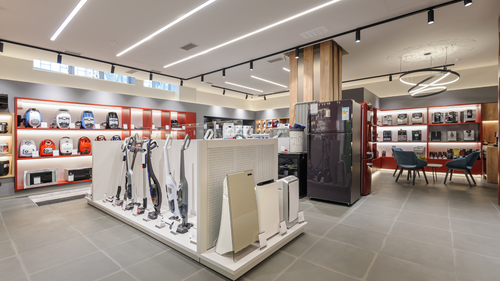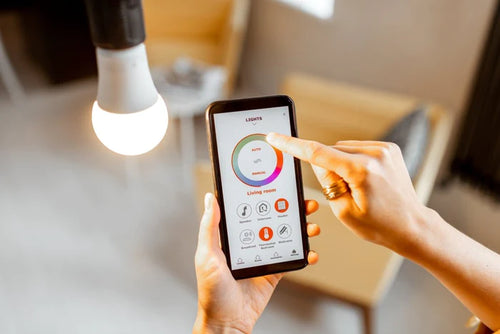DLC 5.1: What You Need to Know to Stay Relevant
DLC 5.1 was recently released, and it has a lot of changes that are going to affect energy incentive programs. If you're not familiar with DLC 5.1, or you're not sure how it will impact your business, then you need to read this blog post. We'll go over all the changes that DLC 5.1 brings to the table, and we'll explain how they will affect energy incentive programs. So don't get left behind - read this blog post now!
One of the biggest changes in DLC 5.1 is the way that it affects energy storage. In the past, DLC had different requirements for energy storage depending on whether it was used for peak demand reduction or time-of-use arbitrage. Now, DLC requires all energy storage systems to meet a single set of requirements regardless of their purpose. This change is going to have a big impact on how businesses use energy storage systems, and it could make energy incentive programs more attractive to businesses that are looking to reduce their electricity costs.
Another change that DLC 5.1 brings is a new way of calculating demand charges. In the past, demand charges were based on a customer's highest 15-minute average power usage during the billing period. Now, demand charges will be based on a customer's highest 30-minute average power usage during the billing period. This change is going to have a big impact on how businesses use energy, and it could make energy incentive programs more attractive to businesses that are looking to reduce their electricity costs.
WHO IS AFFECTED BY DLC V5.1?
For most lighting orders, this update will have no effect, but if you are working on a specific project tied into rebate program, you should be aware of these regulations. DLC has programs that offer cash rebates for installing energy-efficient lighting. The DLC Qualified Products List (QPL) identifies which products are eligible for these rebates. If you are looking to take advantage of DLC incentives, make sure the products you select are on the DLC QPL.
The changes DLC v5.1 brings will have different impacts depending on your project and application, but in general, these new requirements will result in higher upfront costs for LED projects. This is because the most efficient LEDs on the market do not currently meet the new minimum efficacy requirement set forth in DLC v51. Incentive programs can help offset some of this increased cost, making an LED upgrade more attractive from a financial perspective.
WHAT PRODUCTS ARE AFFECTED BY DLC V5.1?
The most affected products are lamps and fixtures for LED retrofit applications. This update was broken up into two phases. V5.0 addressed efficacy and controllability. V51, which is the most recent DLC version as of this writing, adds additional requirements for minimum lumen output and maximum power density.
DLC V5.1 requires a minimum efficacy of 55 lumens per watt for all general purpose LED lamps and fixtures. This is an increase from the previous requirement of 50 lumens per watt. The DLC also now requires a maximum power density of 30 watts per square foot for all general purpose LED lamps and fixtures. This is an decrease from the previous limit of 40 watts per square foot. These new limits will result in higher upfront costs for LED projects because the most efficient LEDs on the market do not currently meet these new DLC requirements. Incentive programs can help offset some of this increased cost.
WHEN DID V5.1 GO INTO EFFECT?
V5.1 was released in 2020, but because of COVID-19, manufacturers had extra time to certify their products and keep them on the qualified products list. V5.1 went into effect July 1, 2022 and many products have been delisted as a result. This DLC version is now the only DLC standard and will be in effect until the next DLC update, which is currently scheduled for 2024.
WHERE CAN I FIND PRODUCTS ON THE DLC QUALIFIED PRODUCTS LIST?
If you have a question about which products will qualify for an upcoming project, reach out to your account manager. Our lighting team can then guide you through the product selection process to make sure you qualify with the utility company in your area.
You can also find DLC qualified products on the DLC website. The DLC maintains a searchable database of all products that have been tested and certified by DLC. This is a great resource if you want to see which products qualify for DLC rebates in your area.
To learn more about how DLC v5.1 affects energy incentive programs, or to find out which products are on the DLC qualified product list, contact your account manager today.
DLC has programs that offer cash rebates for installing energy-efficient lighting. The DLC Qualified Products List (QPL) identifies which products are eligible for these rebates. If you are looking to take advantage of DLC incentives, make sure the products you select are on the DLC QPL
WHY IS THIS IMPORTANT?
It is important to be aware of this update because it can greatly affect the total cost of a lighting project. If you are expecting thousands of dollars of rebates at the end of a project, but you are using products that are not on the qualified products list, you might be in for an unpleasant surprise.
It is also important to be aware of the DLC QPL because it can help you make better decisions about which products to use on a project. With so many options on the market, it can be difficult to know which products will qualify for DLC rebates. The DLC QPL takes the guesswork out of product selection and helps ensure that you are using products that will qualify for DLC incentives.
If you have any questions about how DLC v51 affects your project, or if you need help selecting DLC qualified products, contact us today. We can help you navigate the new DLC requirements and find the best products for your project.


